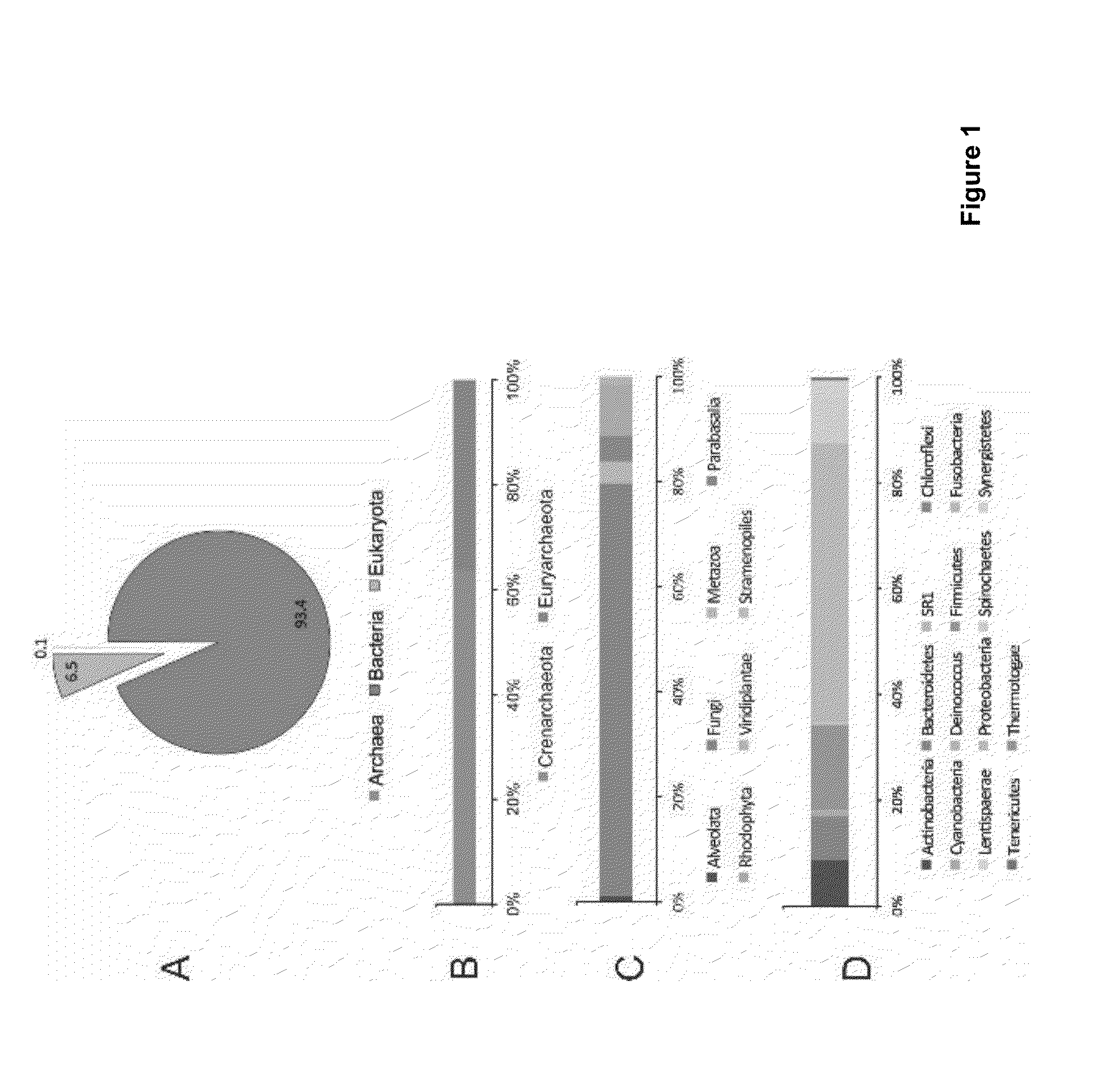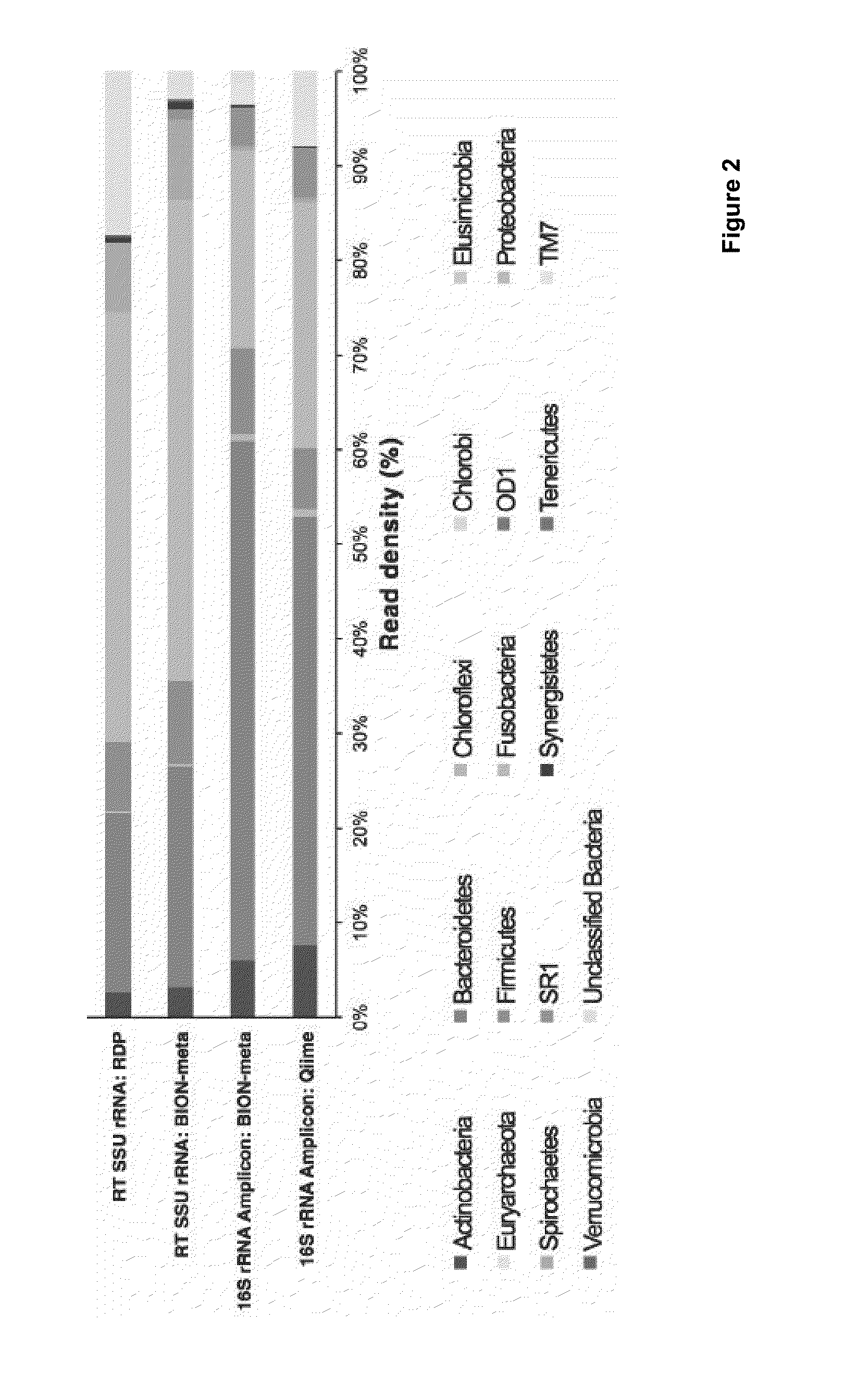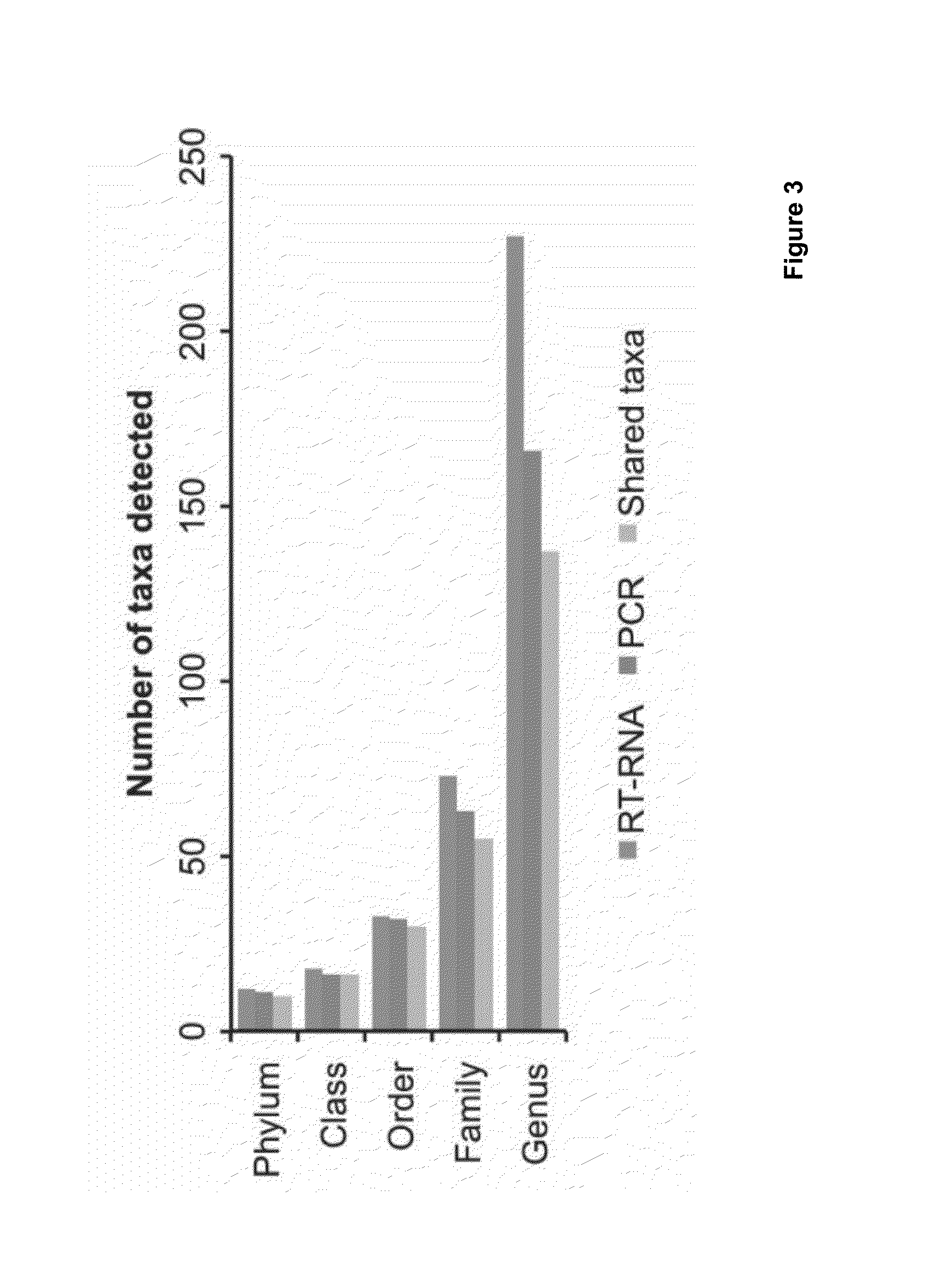Molecular and bioinformatics methods for direct sequencing
a bioinformatics and direct sequencing technology, applied in the field of molecular and bioinformatics methods for direct sequencing, can solve the problems of inability to handle the large amount of sequence data produced from such high-throughput dna, unable to fully understand the true diversity of the organism, and inability to develop microbial diagnostics, etc., to achieve the effect of reducing the degradation reducing the amount of dna and rna
- Summary
- Abstract
- Description
- Claims
- Application Information
AI Technical Summary
Benefits of technology
Problems solved by technology
Method used
Image
Examples
example 1
Isolation and Preparation of Canine Plaque Samples
[0352]Supra-gingival plaque was collected from ten Labrador retrievers and ten miniature Schnauzers selected from a group of dogs undergoing weekly plaque collections. None of the dogs received tooth brushing and all were fed a variety of diets. Plaque samples were either collected prior to feeding or at least one hour after feeding. Supragingival plaque was collected from all of the teeth by scraping plastic loops (Appleton woods, UK) along the tooth surface. The plaque was placed in cryovials containing Ringers Solution (Oxoid). The samples were snap frozen in liquid nitrogen and stored at −80° C.
[0353]Nucleic Acid Extraction from Canine Plaque—
[0354]DNA and RNA was co-extracted from canine plaque samples (n=20) according to the hexadecyltrimethylammonium bromide (CTAB) and phenol / chloroform / isoamyl alcohol (25:24:1) extraction protocol of Griffiths et al. (30) and stored at −80° C. in nuclease free water.
[0355]Gel Extraction and P...
example 2
Isolation and Preparation of Biological Samples Using an Activated Charcoal Extraction Step
[0362]The activated charcoal is prepared as a ‘slurry’ in ddH2O. First, 5.6 g of activated charcoal (Fisher Chemical #C / 4040 / 53) were mixed thoroughly with 50 mL of ddH2O. This initial slurry was then centrifuged at 4,000 rpm for 10 minutes. The supernatant (containing the charcoal particles too small or low in mass to pellet) was removed. The remaining activated charcoal (now containing particles that will pellet at 4,000 rpm for 10 minutes) was then resuspended in a further 50 mL of ddH2O.
[0363]This activated charcoal slurry is used in the pre-treatment step (which can be shaken and vortexed prior to usage if stored). The pre-treatment step involved adding 200 uL of the activated charcoal ‘slurry’ to the isolated biological sample (which can contain a chaotropic agent). The activated charcoal was dispersed throughout the mixture by gentle inversion and the samples underwent slow rotation for...
example 3
High Throughput Sequencing of Isolated and Prepared PCR Amplicon and SSU RT-RNA Samples
[0370]PCR amplicon and SSU RT-RNA query sequences were quality checked and classified against the RDP, Greengenes and Silva databases using the computer-implemented methods of the present invention, as well as the Qiime and RDP classifiers of the prior art.
Qiime—
[0371]the QIIME software package (version 1.4.0) was used to analyse the sequences from the PCR dataset. Briefly, all sequences were de-multiplexed and quality filtered, and reads with a minimum identity of 97% were clustered into operational taxonomic units (OTU's). The most abundant sequences chosen to represent each OTU, and taxonomy was assigned with the Ribosomal Database Project (RDP) classifier (25), and SILVA (23), with a minimum confidence threshold of 80%.
RDP Classifier—
[0372]Sequences from the PCR and SSU RT-RNA datasets were classified and compared using the command line version of the RDP classifier (version 2.5) using the def...
PUM
| Property | Measurement | Unit |
|---|---|---|
| temperatures | aaaaa | aaaaa |
| volumes | aaaaa | aaaaa |
| volume | aaaaa | aaaaa |
Abstract
Description
Claims
Application Information
 Login to View More
Login to View More - R&D
- Intellectual Property
- Life Sciences
- Materials
- Tech Scout
- Unparalleled Data Quality
- Higher Quality Content
- 60% Fewer Hallucinations
Browse by: Latest US Patents, China's latest patents, Technical Efficacy Thesaurus, Application Domain, Technology Topic, Popular Technical Reports.
© 2025 PatSnap. All rights reserved.Legal|Privacy policy|Modern Slavery Act Transparency Statement|Sitemap|About US| Contact US: help@patsnap.com



